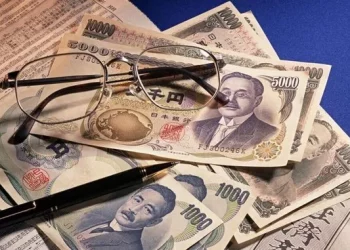Foreign exchange (forex or FX) trading is the global marketplace for buying and selling currencies, with the primary goal of making profits from the fluctuations in the exchange rates between different currencies. As a trader, you may be familiar with the way different currencies are valued against each other, especially when dealing with major currency pairs like the US Dollar (USD) and the Australian Dollar (AUD).
One common question that arises in the world of foreign exchange trading, particularly for individuals involved in international business or travel, is how much a specific amount of money in one currency is worth when converted into another. For instance, many people may wonder how much $3,000 USD is in Australian Dollars (AUD). This is an important question because exchange rates can have significant implications for both individual transactions and large-scale financial operations.
In this article, we will explore the process of converting USD to AUD, the factors that influence exchange rates, and how forex traders can utilize this information for profitable trading. Additionally, we will touch on various strategies that traders use to manage the risks involved in currency trading.
Understanding Currency Exchange Rates
Before we dive into how much $3,000 USD is in Australian Dollars, it is essential to understand the concept of currency exchange rates. A currency exchange rate is the price at which one currency can be exchanged for another. For example, if the exchange rate for USD to AUD is 1.30, it means that for every 1 US Dollar, you would receive 1.30 Australian Dollars.
Exchange rates fluctuate constantly due to various economic factors, including interest rates, inflation, political stability, and global economic conditions. These fluctuations present both risks and opportunities for traders in the foreign exchange market.
How to Convert USD to AUD
To determine how much $3,000 USD is in Australian Dollars, you need to know the current exchange rate for USD to AUD. The exchange rate is determined by various factors such as supply and demand, interest rates, and the overall performance of the economies of the United States and Australia.
To get an accurate conversion, you would typically follow this formula:
Amount in AUD=Amount in USD×Exchange Rate (USD to AUD)
For instance, if the exchange rate for USD to AUD is 1.30, the conversion of $3,000 USD to AUD would be:
3,000 USD×1.30=3,900 AUD
This means that $3,000 USD is equivalent to $3,900 AUD at an exchange rate of 1.30.
Factors Affecting the USD to AUD Exchange Rate
Several factors influence the exchange rate between the US Dollar and the Australian Dollar. These factors include:
Interest Rates: Central banks, such as the Federal Reserve in the United States and the Reserve Bank of Australia (RBA), set interest rates that directly impact the value of their respective currencies. Higher interest rates tend to attract more investors and increase demand for the currency, driving up its value.
Economic Indicators: Economic indicators, such as GDP growth, unemployment rates, and inflation, can affect the exchange rate between two currencies. For example, if the US economy is growing at a faster rate than the Australian economy, the US Dollar may appreciate relative to the Australian Dollar.
Commodity Prices: Australia is a major exporter of commodities such as iron ore, coal, and gold. As a result, the Australian Dollar tends to be highly correlated with commodity prices. When commodity prices rise, the AUD often strengthens, and when commodity prices fall, the AUD can weaken.
Political Stability: Political events and decisions can have a significant impact on the value of a currency. For example, a change in government policies or political instability in the US or Australia can lead to fluctuations in the USD to AUD exchange rate.
Market Sentiment: Currency exchange rates are also influenced by market sentiment and investor perceptions of risk. If investors perceive the US economy as stable and strong, demand for USD may increase, strengthening the US Dollar. On the other hand, if there is uncertainty about the US economy, the USD may weaken relative to the AUD.
The Role of Forex Traders in Currency Conversion
In the forex market, traders play a crucial role in determining currency exchange rates. Forex traders buy and sell currencies in large volumes, and their collective actions influence the supply and demand dynamics of a currency pair. For example, if many traders are buying US Dollars and selling Australian Dollars, the value of the USD will increase relative to the AUD, leading to a higher USD to AUD exchange rate.
Forex traders use a variety of strategies to profit from currency fluctuations, including:
Day Trading: Day traders aim to profit from short-term price movements by buying and selling currencies within the same trading day. They may use technical analysis, such as chart patterns and indicators, to identify potential entry and exit points.
Swing Trading: Swing traders look to capture larger price movements over a few days or weeks. They may use a combination of technical and fundamental analysis to identify trends and potential reversals in the market.
Carry Trading: Carry traders borrow funds in a currency with a low interest rate (such as the Japanese Yen) and invest in a currency with a higher interest rate (such as the US Dollar or Australian Dollar). They earn a profit from the interest rate differential between the two currencies.
Position Trading: Position traders take long-term positions in currency pairs, holding them for months or even years. They rely heavily on fundamental analysis, such as economic data and interest rate expectations, to make informed decisions.
Exchange Rate Fluctuations and Their Impact on Businesses
For businesses involved in international trade, understanding the exchange rate is critical for managing currency risk. For example, an American company importing goods from Australia will need to convert US Dollars into Australian Dollars to pay for the goods. If the exchange rate is favorable, the company will pay less for the goods. However, if the exchange rate moves unfavorably, the company may end up paying more.
Similarly, Australian exporters receiving payments in US Dollars need to keep an eye on the USD/AUD exchange rate. A strong US Dollar means that when the payments are converted back into Australian Dollars, they will receive more AUD. Conversely, if the US Dollar weakens, the company will receive less AUD for the same amount of USD.
Hedging Currency Risk
To protect against unfavorable exchange rate fluctuations, businesses and investors often use hedging strategies. Hedging involves using financial instruments like options, futures, or forward contracts to lock in a specific exchange rate for a future date. This helps mitigate the risk of currency fluctuations that could negatively impact profitability.
For example, a business expecting to receive a large payment in USD may enter into a forward contract to convert that USD into AUD at a fixed exchange rate. This way, they are protected from the possibility of the AUD strengthening against the USD before the payment is made.
What Does $3,000 USD Mean in the Context of Forex Trading?
From a forex trading perspective, $3,000 USD may not be a large amount of money, but it can still have an impact on trading strategies and potential profits. The value of $3,000 USD in Australian Dollars can change depending on the current market conditions and the volatility of the USD/AUD exchange rate.
For example, if the exchange rate is 1.30, $3,000 USD would convert to $3,900 AUD. However, if the exchange rate changes to 1.35, the same $3,000 USD would convert to $4,050 AUD. This highlights the importance of staying informed about market trends and fluctuations in order to make the most of currency conversions.
Conclusion
In conclusion, the value of $3,000 USD in Australian Dollars is determined by the prevailing exchange rate between the US Dollar and the Australian Dollar. Exchange rates fluctuate due to a variety of factors, including interest rates, economic performance, and market sentiment. Forex traders can use this knowledge to make informed decisions and potentially profit from currency fluctuations.
While the specific amount of AUD you would receive for $3,000 USD depends on the current exchange rate, understanding the factors that influence exchange rates can help you make better trading decisions and manage the risks associated with currency trading. Whether you are an individual looking to exchange money for travel or an experienced forex trader, knowing how currency exchange works is crucial for navigating the complex world of foreign exchange.
Related Topics:



























